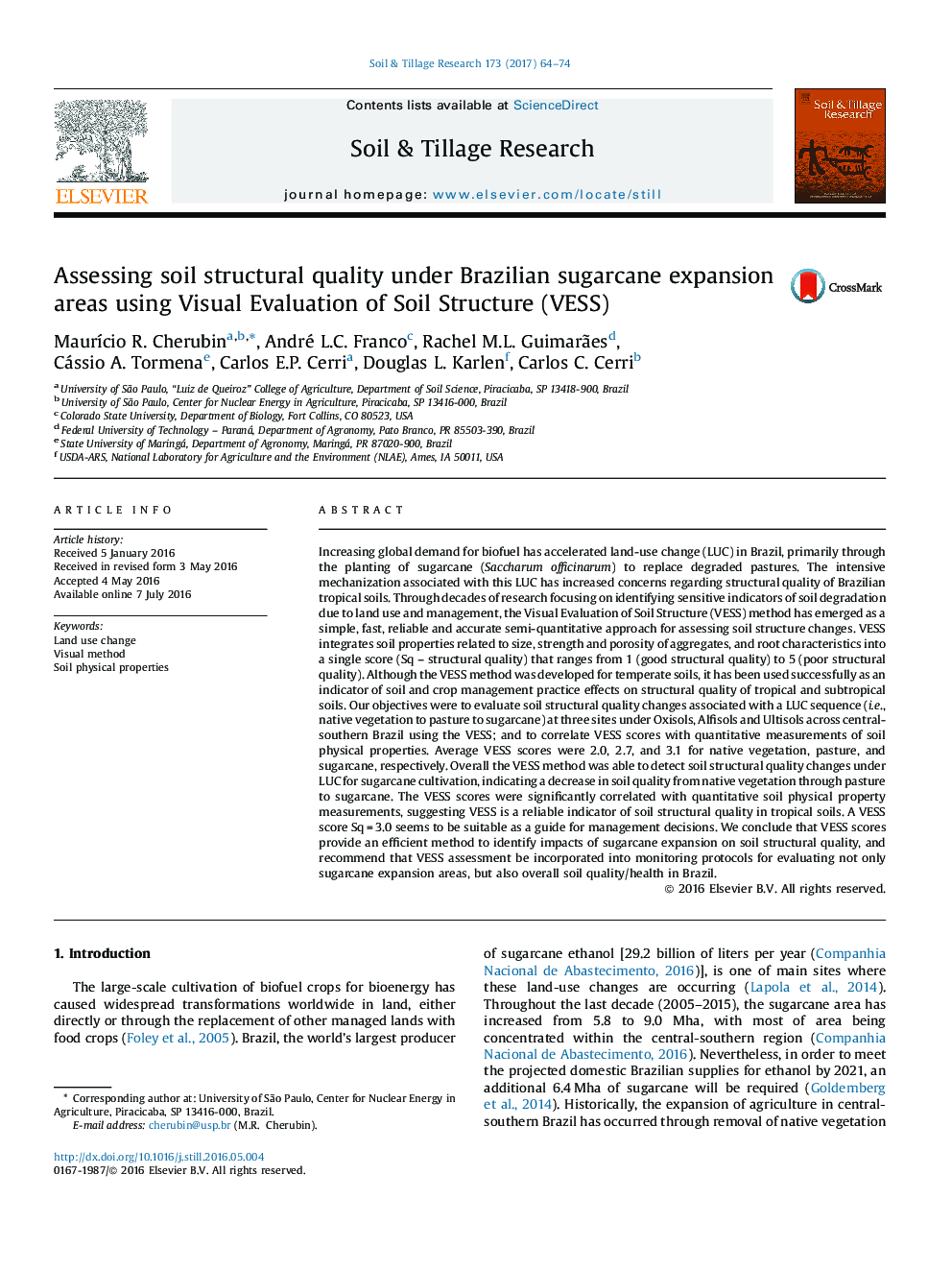| کد مقاله | کد نشریه | سال انتشار | مقاله انگلیسی | نسخه تمام متن |
|---|---|---|---|---|
| 4927487 | 1431830 | 2017 | 11 صفحه PDF | دانلود رایگان |

- The VESS method was sensitive for detecting soil structural quality changes.
- Conversion from native vegetation to pasture to sugarcane degraded soil structure.
- VESS scores were correlated with quantitative soil physical property measurements.
- We recommend VESS for on-farm soil quality assessment in areas of sugarcane expansion in Brazil.
Increasing global demand for biofuel has accelerated land-use change (LUC) in Brazil, primarily through the planting of sugarcane (Saccharum officinarum) to replace degraded pastures. The intensive mechanization associated with this LUC has increased concerns regarding structural quality of Brazilian tropical soils. Through decades of research focusing on identifying sensitive indicators of soil degradation due to land use and management, the Visual Evaluation of Soil Structure (VESS) method has emerged as a simple, fast, reliable and accurate semi-quantitative approach for assessing soil structure changes. VESS integrates soil properties related to size, strength and porosity of aggregates, and root characteristics into a single score (Sq - structural quality) that ranges from 1 (good structural quality) to 5 (poor structural quality). Although the VESS method was developed for temperate soils, it has been used successfully as an indicator of soil and crop management practice effects on structural quality of tropical and subtropical soils. Our objectives were to evaluate soil structural quality changes associated with a LUC sequence (i.e., native vegetation to pasture to sugarcane) at three sites under Oxisols, Alfisols and Ultisols across central-southern Brazil using the VESS; and to correlate VESS scores with quantitative measurements of soil physical properties. Average VESS scores were 2.0, 2.7, and 3.1 for native vegetation, pasture, and sugarcane, respectively. Overall the VESS method was able to detect soil structural quality changes under LUC for sugarcane cultivation, indicating a decrease in soil quality from native vegetation through pasture to sugarcane. The VESS scores were significantly correlated with quantitative soil physical property measurements, suggesting VESS is a reliable indicator of soil structural quality in tropical soils. A VESS score Sq = 3.0 seems to be suitable as a guide for management decisions. We conclude that VESS scores provide an efficient method to identify impacts of sugarcane expansion on soil structural quality, and recommend that VESS assessment be incorporated into monitoring protocols for evaluating not only sugarcane expansion areas, but also overall soil quality/health in Brazil.
Journal: Soil and Tillage Research - Volume 173, November 2017, Pages 64-74